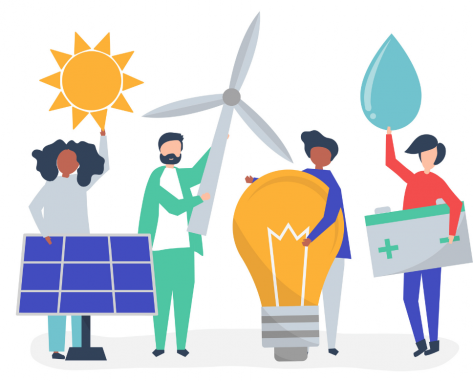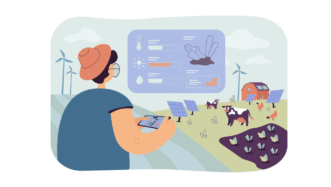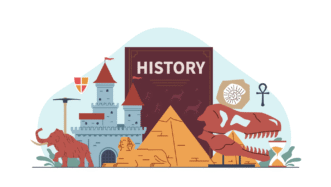LESSON OVERVIEW
With this lesson plan, students discuss different forms of alternative energy sources, learn vocabulary related to generating energy and engage in a group activity.
C2 / Proficiency60 minFlipped LessonUnlimited Plan
This is a Flipped Classroom lesson plan. In a nutshell, it means that the first part of the lesson needs to be done by students at home. Learn more about flipped classroom and how we implement it in these lesson plans in our post.
PRE-CLASS ACTIVITIES
Vocabulary
Before the lesson, students do three vocabulary exercises. First, they do a CPE-style activity in which they need to come up with one word which fits three gaps. All the words can be used to talk about energy. Then, in the next task, they choose verbs which collocate with certain nouns (e.g. absorb/reflect/transmit light, store/generate/absorb energy). In the last exercise, students have to complete sentences about different alternative energy sources with the words in the box (e.g. coating, cooling, turbine).
IN-CLASS ACTIVITIES
Video and discussion
The in-class part of the lesson starts with a task in which students read sentences and decide which of the three alternative energy sources (hydroelectric, solar or wind) each of them refers to. It is followed by a video pre-viewing group activity wherein students discuss what they know about solar farms in deserts.They also brainstorm what would be the biggest problem if we decided to cover the Sahara with solar panels. Then, they watch the first part of the video and check their ideas. After that, they watch the first part of the video again and complete gaps with short phrases. While they watch the last part of the video, they take notes on three issues mentioned in it. This activity is followed by a discussion about the solar power.
Group activity
In this part of the lesson, students first read four descriptions of other alternative energy sources (hydroelectric, wind, nuclear and geothermal) and complete the gaps with words in the box (e.g. maximize efficiency, drill a well, pump steam). After that, they do a group activity in which they complete a table with information about how different energy sources are or could be developed in their countries considering climate, landscape, reliability and possible public objections. They then compare their ideas with the other groups. Finally, students do a revision activity (which the teacher can also choose to do at the beginning of the next class). They need to explain how alternative energy sources are used to generate electricity, using the vocabulary they’ve learnt in the lesson.
Subscribe to unlock these and many other Standalone lesson lesson plans with the Unlimited planWORKSHEETS














On slide 12 question A “reduce” light still collocates. Film or tint over your windows reduces light by as much as 20%. for example
Thanks for all the work you do!
Hi, Dennis! Thanks for your comment. ‘Reduce’ might indeed not be the best word here, so we’ve changed it to make it less confusing.
Love this! Thanks for all your amazing lesson plans.
Other kinds of lessons around this topic I think would be really cool: the science of climate change / managing climate change (the current one is more about climate activism if i remember rightly), or a lesson that goes into more depth about renewable vs fossil fuels, more of the challenges with renewable energy , or reducing our dependence on fossil fuels!
Thanks for sharing your ideas with us! We’ll think about creating some lessons around the topics 🙂
This was exactlyy what I was looking for. I have a srudent that is an Electric Engeneer and we have just started having classes. Im sure she’s gonna love it. I would love to have more classes on this topic, as well as oil and gas.
Glad to hear that, Adriana. And thanks for the ideas!
just wondering about 2c
as convert air seems a strange collocation
whereas air power(ed) would actually make sense
You could say ‘to convert air into water’ for example. And ‘air-powered’ works but ‘to power air’ doesn’t make sense I think.